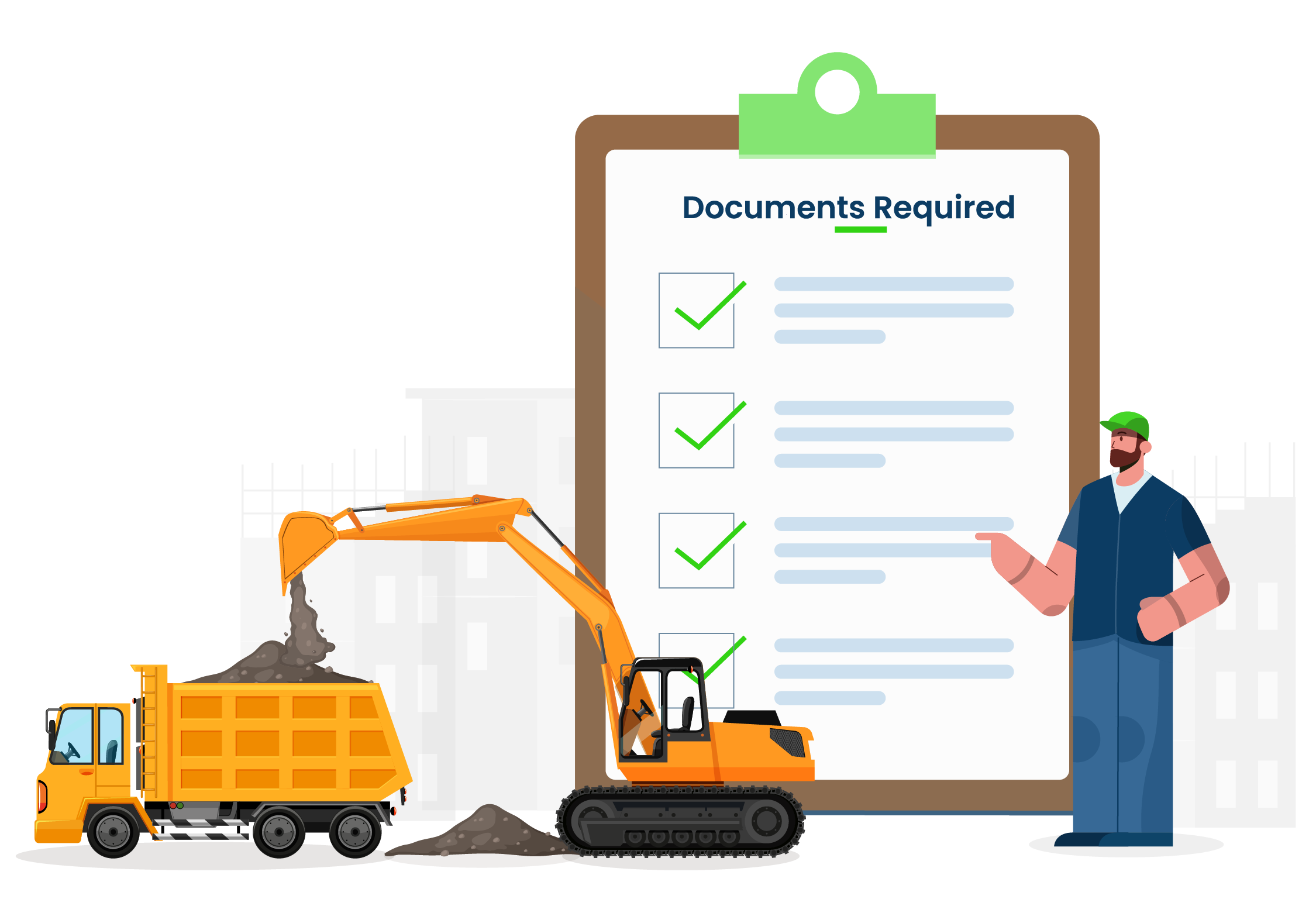Updated on October 14, 2025 05:27:40 PM
Acquiring Construction and Demolition Waste Management Authorization is crucial because Goa, being an emerging tourist destination with rich culture and beautiful natural beauty, also suffers from the problem of disposal of C&D waste arising from the developing construction sector, new tourism facilities and real estate business. In the recent past, there has been an increase in the construction of hotels, resort and residential buildings and as such there has been an increase in generation of construction and demolition waste which include; concrete, bricks, metal and wood. In order to address this, the state government has developed several progressive policies meant to lead to the setting up of efficient structure for the management of wastes. Such measures include establishment of C&D waste processing plants, segregation of waste and recycling and remanufacture of construction items. Increasingly, the government has factored waste management as a requirement for larger projects with the aim of enforcing green development. There are also attempts being made to increase public consciousness on the right method to dispose C&D waste and general promotion on the use of recycled materials in new construction. These measures, thus, constitute Goa’s strategy to maintain its bio-diversity and beauty while simultaneously promoting a circular economy and sustainable, clutter free urban growth that provides a cleaner environment for locals and tourists.
Construction & Demolition waste also known as the Construction & Demolition materials include waste products such as rubble that are produced as a result of construction, improvement or destruction of structures. This waste stream comprises elements such as concrete, bricks, wood, metal, glass, tiles, and plastics. In construction processes, the common wastes include concrete and metals where the materials used in construction such as concrete and metal are initially cut or shaped and then thrown away as scrap, demolition processes involve wastes where structures are brought down, and they are dismantled. Another way in which renovation projects add to the amount of C&D waste is by removal of existing fixtures, fittings and building elements.
C&D waste is an environmental and management problem. If ineffective, it results in land degradation, water bodies pollution and enhanced emission of greenhouse gasses. This sometimes leads to congestion of the C&D waste hence exerting pressure on the waste management systems thus having cases of instances whereby the wastes are dumped unlawfully and those that are dumped are not well managed. Besides, poor disposal has implications in the development of health risks to communities and workers as well.
C&D waste management can therefore entail source separation, recycling and reuse of the construction and demolition waste. When different waste reduction methods and technological advances in recycling are incorporated within the C&D waste management systems, it then becomes easy to reduce the effects that these wastes have on the environment and at the same time conserve natural resources.

Construction and Demolition Waste Management Authorization offers numerous benefits that impact the environment, economy, and society. Here are some key benefits:

These usually involve a number of formalities such as obtaining all the legal permits, conforming to the legal requirements when it comes to disposal of wastes and applying all the measures of effective waste management. Here you will get some stress understanding the authorization process:
Every waste generator and service provider while implementing the rules is required to draw a new waste management plan within a period of six months from the date of notification. This plan should contain provisions on how to segregate, store, collect, reuse or recycle, transport and dispose of C&D waste within their jurisdiction.
The operators of the C&D waste processing facilities require the authorization of the State Pollution Control Board (SPCB) or the Pollution Control Committee (PCC) through Form I in which the applicant must prove that the facility meets the environmental standards and adequate infrastructural provisions are in place.
If approved, the SPCB/PCC assesses the application on its compatibility to conform to specified environmental qualities of the facility. Also as part of the Research Analysis, the needs for development of these infrastructure, technology and operational plan of the facility will be evaluated against the projections of the C&D waste generation.
Upon successful assessment, the SPCB/PCC grants authorization to the facility. This authorization is crucial for the facility to operate legally and is subject to periodic monitoring and compliance checks by the SPCB/PCC.
Once the SPCB/PCC conducts the assessment and approves it, the SPCB/PCC then gives the authorization to the facility. It is a legal requirement for such a facility to be authorized to operate and such authorization must be coordinated by the SPCB/PCC and may include periodic reviews and check-ups.

To obtain authorization for a Construction and Demolition (C&D) waste management facility in India, the following documents are required:


Professional Fees to obtain Construction and Demolition Waste Management Authorization in ₹99,000(only with Professional Utilities)

The C&D Waste Management Authorisation to be granted is valid for a period of 5 years as per Construction & Demolition Waste Management Rules, 2016.
The key points regarding the validity of the authorization are:

Conclusion
Having the construction and demolition waste management authorization is crucial because construction and demolition waste management is an important concern in Goa for the protection of the environment as well as for the sustainable development of cities. The regulatory guidelines issued by the SPCB guide the developers and the facility operators on how to manage their waste and impact the environment in a positive way while at the same time cutting costs and promoting the use of a circular economy. The authorization process increases compliance with environmental standards; while protection and recovery of materials, decreased consumption of landfill space, job creation form an argument that waste disposal in the C&D sector for Goa is significant for the development framework.

At Professional Utilities, we leverage our industry knowledge and expertise to help businesses navigate complex regulations, minimize risks, and optimize operations for maximum efficiency and profitability.






"Explore how Professional Utilities have helped businesses reach new heights as their trusted partner."

It was a great experience working with Professional Utilities. They have provided the smoothly. It shows the amount of confidence they are having in their field of work.

Atish Singh
It was professional and friendly experience quick response and remarkable assistance. I loved PU service for section 8 company registration for our Vidyadhare Foundation.

Ravi Kumar
I needed a material safety data sheet for my product and they got it delivered in just 3 days. I am very happy with their professional and timely service. Trust me you can count on them.

Ananya Sharma
Great & helpful support by everyone. I got response & support whenever I called to your system. Heartly thanx for Great & Super Service. Have a Great & Bright future of team & your company.

Prashant Agawekar
Thank you so much Professional Utilities team for their wonderful help. I really appreciate your efforts in getting start business. Pvt Ltd company registration was smooth yet quick.

Abhishek Kumar
I applied for Drug licence and company registration and their follow-up for work and regular updates helped me a lot. They are happily available for any kind of business consultancy.

Vidushi Saini
Great experience went to get my ITR done, process was quite convenient and fast. Had a few queries, am happy about the fact those people explained me all things I wanted to know.

Taniya Garyali
Great services provided by Professional Utilities. They are best in this industry and the best part is their prices are so affordable. Kudos to you. Now you guys are my full-time consultant.

Aftab Alam
Frequently Asked Questions
It was further noted that Goa is one of the many states that are rapidly urbanizing, particular with the new developments associated with tourism. If performed correctly and efficiently, C&D waste management contributes positively to environmental conservation by minimizing pollution, the wastage of valuable resources and, in enabling the reuse of construction and demolition products.
The process includes formulation of waste management plan, filing of Form I and getting approval from the Goa State Pollution Control Board or Pollution Control Committee as the case may be. This also covers the facility operation’s consideration on the impact of the environment and disposal of wastes in compliance with the regulations.
The authorisation is for a period of 5 years. The applicants must apply for renewal three months prior to their current authorization and to make further compliance to the conditions for renewal.
A violator of authorized C&D waste management faces sanctions that include fines besides revoking of authorization. It also results in environmental production and legal ramifications for the producer or facility manager of wastes.
Speak Directly to our Expert Today

Reliable

Affordable

Assured